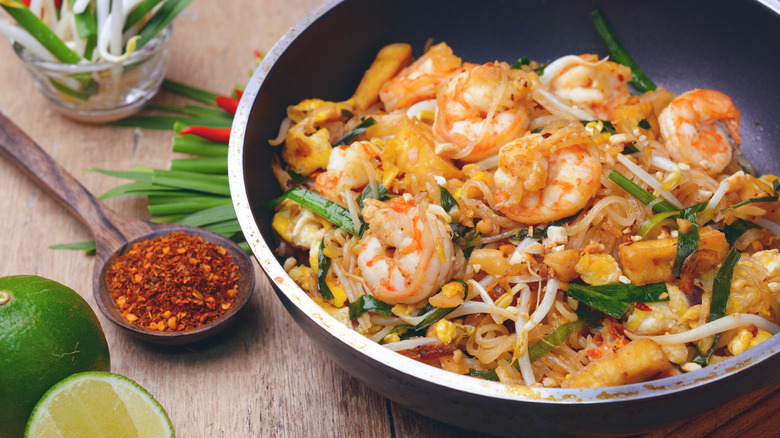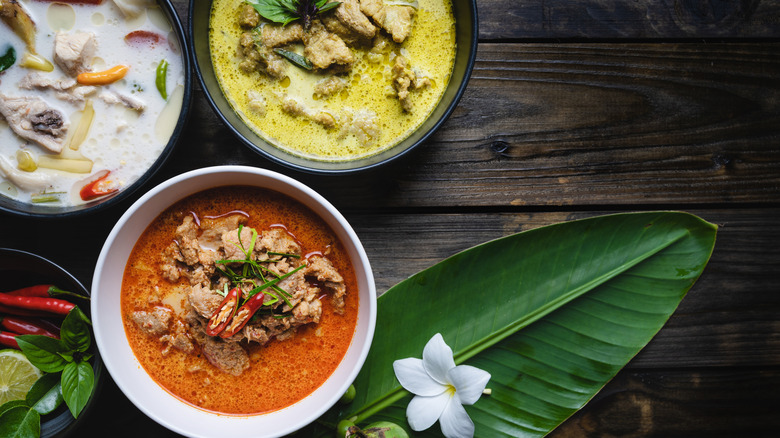If You're New To Cooking Thai Food, Taste As You Go
Learning a new cuisine can be both fun and maybe (a tad) intimidating. When recreating your favorite Thai dishes like pad Thai, larb, tom yum soup, or even blending an authentic curry paste from scratch, there's a vital cooking practice to remember as you follow a recipe.
Every ingredient and every finalized dish is different. Even when following the same recipe, you're bound to find a slight variation in flavor profile and heat level with every finished dish. Unlike other styles of cooking, Thai food prides itself on the ability to bring a balance to a dish that is rich in sweetness, savoriness, saltiness, sourness, and hotness. According to Chef Jet Tila (via KCRW), the combination of these flavors is referred to as yum in Thai cuisine. So how do you make sure that both you and your guests sharing in your meal have the perfect Thai yum experience? Taste your dish as you go.
Build and develop your Thai dishes flavor
When starting your journey to cooking Thai cuisine, it's essential to really learn each ingredient you'll use throughout your recipes. As Thai sauces, seasonings, and even produce may be new to you, getting to know how they develop in a dish is key. Even different brands can offer different tastes on a similarly labeled ingredient. Over time, you'll discover your favorites and lean toward products that match your preferences. Until then, it's up to you to taste each and every ingredient before and during your cooking.
Another rule of thumb, start with small quantities and then add up. For example, if a recipe calls for a whole birds eye chili, start with a fourth and build up the heat level. What may be mild to one person may be hot to the other (especially since authentic Thai recipes tend to lean on the very hot side). As flavors blend and work in merriment to create yum, this gives you an excellent opportunity to know the purpose of each ingredient and how it adds to the dish. If it's a dish lacking the sour-tart element, add a squeeze of lime. Maybe it's too acidic; add a pinch of coconut sugar to amplify the sweetness.
With the mental notes and the learnings along the way, tackling Thai dishes will be an easy and fun endeavor in the kitchen.

